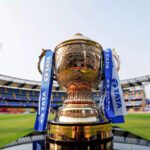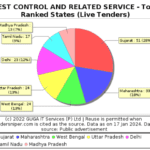While most facts about the Ranji Trophy are fairly well-known, there are a few that may have escaped your attention. Let’s delve into some intriguing aspects of India’s premier domestic cricket competition.
1. The Cricket Championship of India
The Ranji Trophy is thought to have originated in the 1930s, following a meeting of India’s Board of Control for Cricket in July 1934. The Cricket Championship in India was the name of India’s first significant premier first-class level domestic competition. However, before the Ranji Trophy, there was a tournament called the Bombay Quadrangular, which ran from 1912 until 1936. In 1937, it was renamed the Bombay Pentangular when an extra team was added. The BCCI replaced this yearly event, which had teams divided by religion, with a zonal tournament in 1946.
2. Maharaja Ranjitsinhji’s Truth

Kumar Shri Ranjitsinhji, widely regarded as India’s first cricketer, is not known to have played for the country. His fascination with the British way of life led him to decline the captaincy of an all-Indian squad that visited England in 1911. Ranjitsinhji went to England during his formative years and remained a devoted Sussex and England cricketer throughout his career. Despite his outstanding batting and fielding skills, he faced prejudice and hidden racism. His county records, including 72 centuries and 109 fifties, speak for themselves, making it fitting to name a trophy after him.
3. The First Champions

The inaugural match of the Ranji Trophy took place between Madras and Mysore on November 4, 1934. This match had a unique rule – if a match ended in a draw, the outcome was determined purely by the performances of the two sides in the first innings. Interestingly, this rule of the first innings lead still exists today but in a more unbiased version.
4. The Double

In the 1993-94 season, Hyderabad made a strong statement by defeating Andhra Pradesh with a massive total of 944/6, thanks to Narender Singh’s five-for and two players scoring double centuries. Maturi Sridhar’s exceptional 366 in an innings remains the third-highest individual score in Ranji Trophy history. Surprisingly, almost 17 years later, Hyderabad was dismissed for just 21 runs against Rajasthan, marking the lowest-ever team total in the tournament. This remarkable turnaround was orchestrated by an 18-year-old debutant named Deepak Chahar, who took 8/10 in 7.3 overs.
5. The Only Tie in History

The Ranji Trophy semi-final of 1945-46 holds a unique record – it was the first and only tied match in the championship’s 80-year history. Baroda faced Southern Punjab in a four-day encounter at Patiala’s Baradari Ground. Southern Punjab surrendered in the first innings before a resilient Lala Amarnath’s battling 91. Aftab Ahmed then stormed down the Baroda batting order, taking 6 wickets for 37 runs and giving his team a 61-run lead.
These lesser-known facts add depth and intrigue to the rich history of the Ranji Trophy, highlighting the evolution and memorable moments that have shaped this prestigious cricket competition.







